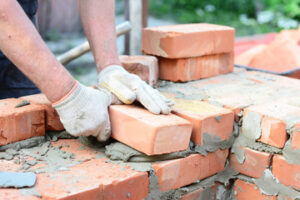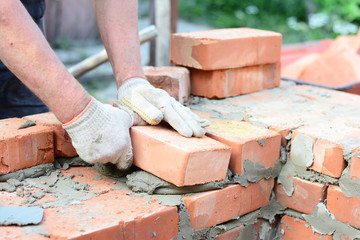Pro Angle Masonry Charleston is the process of building structures from individual units laid in mortar. These units can be bricks, stones, or concrete blocks. This material is typically laid in a pattern to form the shape of the structure. It is one of the oldest building materials and has been used for thousands of years. The advantages of masonry over other building materials include cost efficiency, durability, and maintenance.
Throughout history, the choice of materials for masonry has been influenced by geological formations. For example, the Egyptians used limestone, sandstone, alabaster, granite, basalt, and porphyry in the construction of their temples. In contrast, the West lacked outcroppings of stone but was rich in clay deposits, so their temples were built with sun-dried bricks.
To determine the amount of material needed for a particular project, a basic method is to estimate the square footage of the walls, divided by the surface area of each unit. In addition, a general guideline is to use ASTM C476-compliant mortars. This will ensure that the mix will be consistent and the resulting concrete structure is as strong as possible.
Acrylics, on the other hand, offer a high degree of resistance to vapor and moisture. Acrylic films adhere to masonry surfaces by forming a continuous surface, which reduces vapor transmission and contributes to a glossy finish. They can also intensify the color of the substrate. They have been used as paints in many industrial applications.
There are many types of masonry materials available, and brick is the most common. The most common brick used in masonry is red, but today there are hundreds of shades and designs to choose from. Some bricks even have designs that mimic expensive materials. Bricks are often laid in different formations and reinforced with mortar to increase durability and resistance to damage.
Besides brick, stone is a very durable and energy-efficient material. It is also very durable and weatherproof, which means that it can last for many years. Its lifespan is between 300 and 1000 years. Another popular option is precast concrete blocks, which are large and dense. They are also very cost-effective and suit large projects well.
The process of masonry work involves the building of structures from building blocks. The process is complex and imposes significant temporal, mental, and physical demands. These demands increase the risk of errors and negatively impact safety and productivity. Consequently, it is imperative to understand the process and the specific tasks required. The materials used in masonry construction vary widely. In addition to bricks, natural stones may also exhibit variable characteristics, so it is essential to follow certain guidelines to minimize the chances of errors.
The Ming Dynasty saw the first widespread adoption of masonry city walls. Since then, nearly all Chinese cities have been constructed using masonry walls. However, during this period, the process of masonry construction was correlated with various types of disasters. This caused a decrease in total economic output, reduced government fiscal revenue, and decreased demand for mass construction projects.
The degree of deformation of masonry brick walls under fire depends on several factors. One of these is the mechanical properties of the bricks. In a study by Nguyen and Meftah, the deformation of masonry brick walls increased at higher temperatures. The researchers also measured the compressive strength and Young modulus of mortar under different temperature conditions. Interestingly, bricks insulated with lightweight plaster had improved fire resistance.
In the Ming Dynasty, masonry walls were used for defense purposes. These buildings were built in cities around the country to provide protection from invaders. The spread of masonry walls began in the southern and increased dramatically during the Ming Dynasty. The central government facilitated the flow of resources and information throughout the country, and masonry walls were an integral part of this.
The cost of masonry work varies significantly depending on the size of the job and the materials used. It also depends on the number of layers and the type of bricks used. The amount of mortar that will be used between the bricks also plays a part in the cost. You will also need to consider the tax that will be added to the final cost of masonry work.
The cost of masonry work varies from region to region, but it usually stays in line with the cost of living in the area. In addition, the style of stone used in the construction can affect the price of installation. Smaller, irregular stones require more time to install than larger, more regular stones. In general, brick houses are less expensive than those constructed of other materials.

